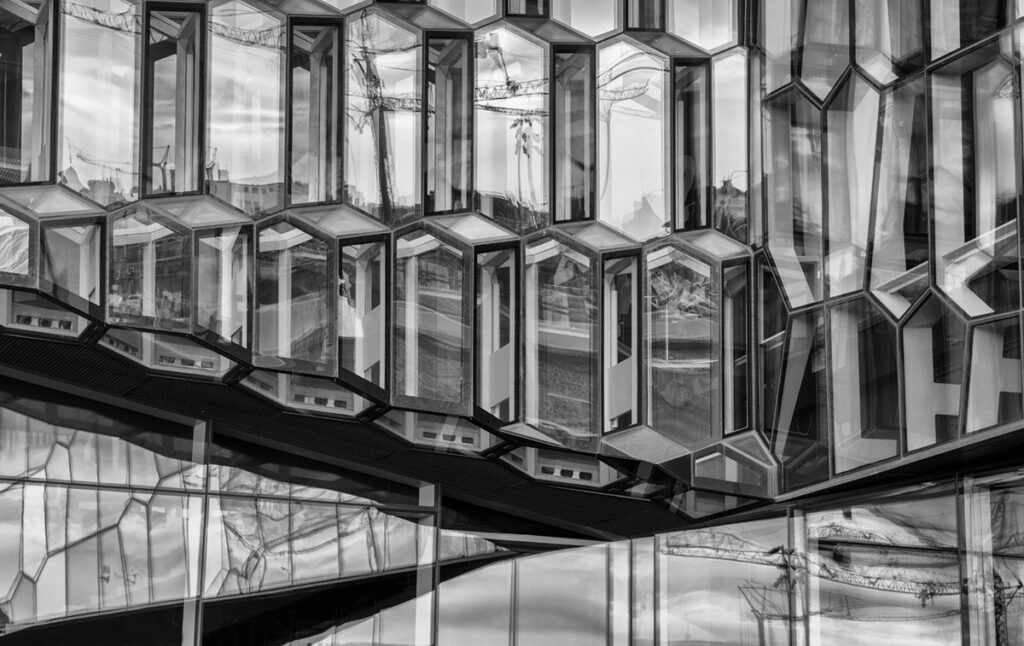“Abstraction allows man to see with his mind what he cannot see physically with his eyes.” – Arshile Gorky

Ask people what sort of art they find the most intimidating and they’ll generally say abstract. This was certainly true for me until I spent some time with it. The term abstract is often applied to art when ‘impossible to understand’ is meant.
So, what is abstract art? The adjective abstract means something that exists in thought or idea rather than the physical or concrete. Applied to art, it describes a visual language of shape, form, color and line that is used to create a composition independent of visual reference; one without the logic of perspective or a visible reality.
Abstract art is non-figurative, non-objective, and non-representational which means it has stripped away the real-life, expected visuals and makes our brain work harder at a subconscious level. Our brain has to function in a less comfortable, more puzzled way to find meaning.
German artist, Wassily Kandinsky, is considered the first true abstract artist. He is best known for his color theory and attaching emotion to his vivid use of color. Kandinsky saw a relationship between his paintings and music. Music is expressive without representing the real world, through patterns of sound. His paintings contain no recognizable objects yet represent the real world through patterns of form, color, and line. He called his paintings ‘compositions’ which is a fitting description of abstract art.
But abstract art is not a current phenomenon, it goes back in history to ancient rock paintings, textile patterns and pottery designs that captured symbolic meanings. Contemporary abstract art emerged in the early 20th century and includes Cubism, Fauvism, Orphism, German Expressionism, and Abstract Expressionism.
As the world has become a smaller place, abstract art has grown. Artists have gained access to other cultures and have been exposed to alternative ways to describe visual experiences. And as technology, science, and philosophy have grown, we see artists encompassing these fundamental changes. Abstract art’s growth can be seen as a response to and reflection of the growing abstraction of social relations and the preoccupation of the social and intellectual areas in all of Western culture.
When you experience abstract art, you are experiencing one of the purest forms of expression. The subject before you is derived entirely from the artist’s mind as opposed to being copied from the real world. The artist is using color to evoke and communicate emotion without the constraint of form; describing a visual experience that is a departure from reality.
Here are some thoughts to keep in mind when viewing abstract art to avoid the feeling of ‘impossible to understand’.
- The abstraction may be slight, partial, or 100% abstraction
- Figures, objects, or landscapes may be simplified – 3-dimensional perspective is flattened
- Gestural marks or geometric shapes may be the subject of the painting along with color, size, scale, brushstrokes, and the process of creation
- This is art for art’s sake – it is purely about the creation of beautiful effects
- Not all abstract art however, is designed to make you feel good; it resonates with the social issues of the day
- Color or form may be altered in conspicuous ways like a turquoise tree
- Light is often used as a mechanism to alter visual perception
- Abstract art often goes beyond the material world and represents the spiritual
- Above all, it stresses the role of imagination and the unconscious as essential creative factors
How ever it is defined, abstract art challenges us to interpret an image that, in no way, resembles the kind of images our brain is programmed to understand. A study by neuroscientist, Eric Kandel, proposes that because our brain must work harder and in a different way to understand abstract art, people often find it intimidating.
Side note: The CIA, the Cold War, and Abstract Expressionism
When I Goggled Abstract Expressionism, I found many links to the CIA and the Cold War. My curiosity was aroused! I was a child during the Cold War; I remember the bomb shelters and Russia. The Cold War was so much more; it was an idea, an image and a propaganda war – a war of the heart and mind.
Russia did not allow freedom of expression in any form thus its art, Socialist Realism, was stylized, rigid, and confined. The CIA saw Abstract Expressionism as the ideal opportunity to show the world our wealth of creativity, intellectual freedom, and cultural power; our superiority over Russia. Because most Americans did not like non-realistic art, the CIA’s project was Top Secret! Millionaires like Nelson Rockefeller (MOMA), William Paley (CBS & CIA), and Julius Fleischmann served as conduits for the CIA’s money; serving as the head of foundations set up by the CIA to promote US culture.
While the CIA’s promotion certainly didn’t hurt, critics strongly feel that Abstract Expressionism would have flourished on its own.
